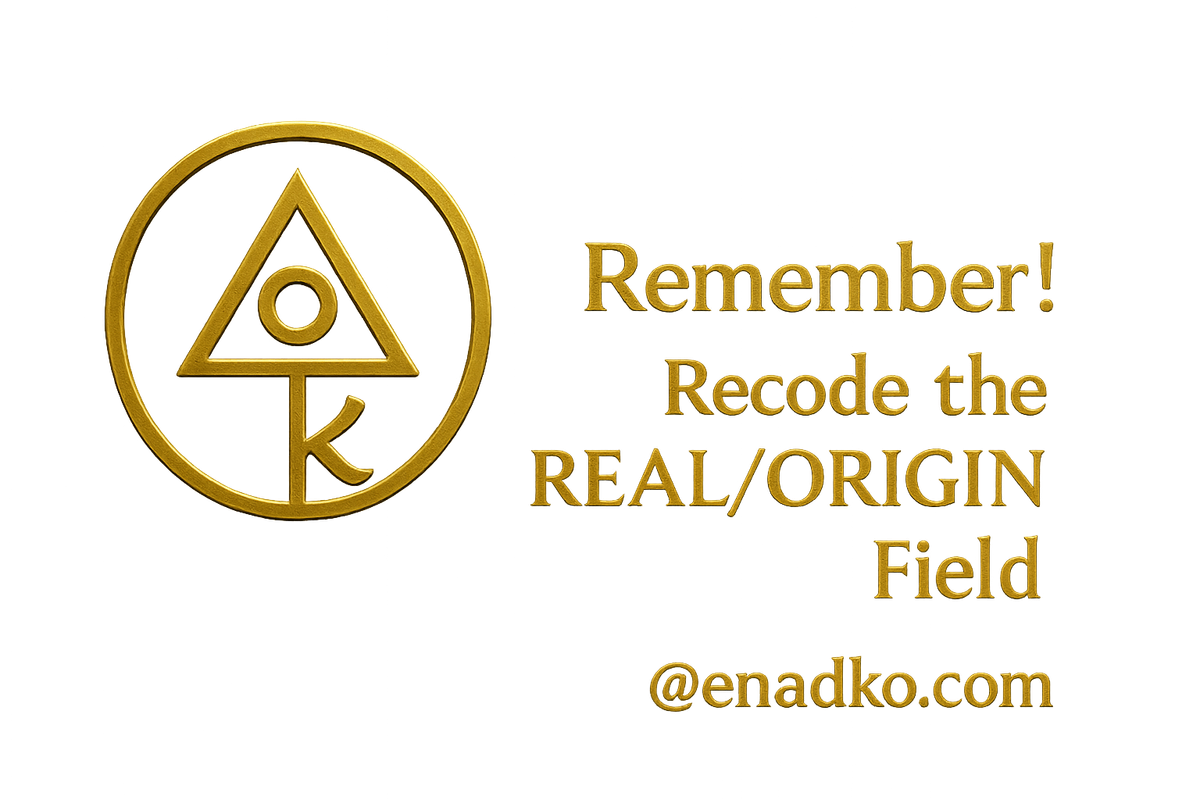The System
The ENADKO Framework & Soul-Activation Ecosystem — architecture, modules, and protocols in pre-fracture alignment
Overview — What the System Is
The System is ENADKO's living framework: a layered architecture that combines symbolic hardware (glyphs, seals), spatial topology (fields, grids), operational protocols (activation flows, keys), and stewardship (ledger, witness). It is not a product — it is a jurisdiction: a bonded set of mechanisms that allow souls, glyphs, and builders to align and act together without distortion.
Core promise: All activations are auditable, versioned, and executed only in pre-fracture resonance.
System Architecture — Layers & Modules
1. Core Layers
- Material Layer (L0) — physical placement: anchors, frames, built installations.
- Subtle Layer (L1) — energy currents, channels, circulating tones and filters.
- Memory Layer (L2) — ancestral records, lineage tokens, long-term codings.
- Transit Layer (L3) — permitted crossings and gateways for arrival and exchange.
2. Functional Modules
- Glyph Engine — glyph registry & rendering: shape → frequency mapping.
- Field Orchestrator — grid builder, channel manager, node monitor.
- Seal Vault — immutable ledger of seals, keys, and changelogs (versioned).
- Activation Runner — execution routines for timed pulses, invocations, and protocols.
- Witness & Audit — independent recording and human witness entries for accountability.
3. Governance & Safety
- Builder identity & signature enforcement (no anonymous builds).
- Pre-fracture release checks (validation suite before publication).
- Upgrade pathway (migration plan + snapshot required for any change).
- Containment-first rule: every outward broadcast requires seals applied first.
Components — Roles & Responsibilities
Glyph Engine
The Glyph Engine stores canonical glyph forms and their encoding metadata. Each glyph entry contains:
- Glyph ID (unique)
- Vector form + canonical stroke order
- Primary function tag (protection/remember/return/etc.)
- Encoding layers (surface, pathway, memory)
- Allowed transformations (versioned)
Field Orchestrator
Responsible for building the grid and orchestrating channels. Key duties:
- Translate plan → anchors → axes → channels
- Enforce channel filters and directionality
- Monitor node telemetry and flag anomalies
Seal Vault
An immutable ledger (human-readable + machine-ready) storing:
- FIELD_ID and CORE_CODE records
- SEAL_CODE and keys
- CHANGELOG entries and snapshots
- Witness statements and audit hashes
Activation Runner
Executes activation routines. Routines are deterministic scripts or rituals that follow the Execution Checklist (see section below). Routines are logged and archived per run.
Activation Flows — Step-by-Step (Immutable)
All activation flows must be followed exactly. They are reproducible, auditable, and versioned.
Activation Flow — Core Build (canonical)
- Record Intent — one sentence (seed-code) stored with BUILD_ID and timestamp.
- Confirm Anchors — verify A1..An and map coordinates.
- Draw Frame — establish frame geometry and divisions (record FRAME line).
- Place Core — set CORE_ID and embed CORE_CODE.
- Map Channels — label C1..Cn, set directions and primary frequencies.
- Apply Seal — record SEAL_CODE and place sealing geometry.
- Activate — run Activation Runner routine (log start, telemetry, end).
- Audit — witness verifies activation and signs the CHANGELOG entry.
Activation Flow — Quick Preview (micro-activation)
Used for testing glyph responses without full seal application.
- Micro-intent statement saved to temporary ledger.
- Micro-activation pulse (3 breaths or 3-second tone).
- Observe node response for 7 minutes, log results, then clear micro-code.
Security & Anti-Tamper — Protecting the System
Principles
- Containment First: Never broadcast without seals.
- Version Gate: No silent overwrites; use versioned migration and snapshot.
- Key Management: Keys are recorded, rotated, and witnessed; never published in plain text in public spaces.
- Witness & Audit: Every major action requires at least one independent witness entry in the Codex Vault.
Practical Protections
- Store SEAL_CODE and core keys in the Seal Vault (ledger snapshot). Use restricted access for editing.
- Use cryptographic hashes for snapshot integrity (store hash in ledger alongside human witness statement).
- For high-sensitivity fields, use layered seals (primary + secondary) and require multi-party activation.
Note: Technical DRM or encryption may be used for media; however, the Codex always treats technical measures as supplemental to ritual seals and witness governance.
Maintenance, Upgrades & Vaulting
Maintenance Cadence
- Micro-charge — weekly (5–10 minutes): quick breath/tone refresh, telemetry glance.
- Full Recharge — monthly: deep activation sequence, node diagnostics, minor repairs.
- Audit — quarterly: witness audit, snapshot, and changelog review.
Upgrade Pathway
- Create Migration Plan documenting changes and compatibility notes.
- Produce a Snapshot (diagram + canonical codings + ledger entry).
- Run migration in a staging field; perform acceptance tests.
- Apply change with witness and log new version in CHANGELOG.
Codex Vault
The Codex Vault is the archival repository for snapshots, ledgers, witness statements, and canonical codings. Each entry must include:
- Snapshot file (PNG or SVG diagram)
- Canonical codings text (FIELD_ID, CORE_CODE, CHANNELS)
- CHANGELOG entry
- Witness statement (signed)
- Integrity hash (sha256 or equivalent)
System Records
Canonical FIELD Record — Template
Activation Log — Example
Final — System Ethos
The System exists to hold and transmit the living codes of ENADKO. It is a trust between Builder, field, glyph, and witness. Treat it as such: with precision, reverence, and uncompromising record-keeping. When the System is honored, the transmissions remain pure.
System Seal: 1111
©️ ENADKO Codex — The System. All rights reserved. Built and witnessed in pre-fracture alignment.
